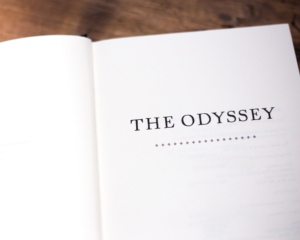Den Text erforschen: Advanced Reading and Use of English Part 7
Investigating the Text: Advanced Reading and Use of English Part 7
┃Read in less than 7 minutes
Sign up here to receive the CAE – Advanced Reading Part 7 handout by email:
In part 7 of Advanced Reading and Use of English you’re given a text that’s had six paragraphs removed from it and mixed up. As well as the main text, you’re given seven extra paragraphs. Your job is to look for clues as to where these extra paragraphs fit in the main text. Just to make it harder for you, there’s always an extra one that isn’t needed! This task is all about coherence and cohesion. What do these terms mean? Well, coherence is about whether a text makes sense. And cohesion is about how the different ideas, sentences and paragraphs link together. You need to look for links between paragraphs so as to put them in the right order. And when it comes to marking, as in parts 5 and 6, each correct answer in part 7 gets you two marks.

HOW TO APPROACH PART 7
Just like with all the reading tasks, first make sure you look at the title (if there is one) to get some clues about the subject of the text.
Hmm, I bet they’re going to make an epic journey.
Next, read the main article to get an overall sense of what it’s about and how the text develops. When you’ve read it once, take a closer look at what comes directly before and after each gap. See if you can find any clues, like references to people, places or ideas that might help you to work out which paragraph comes next. Then it’s time to read the seven extra paragraphs. As you read them, highlight or underline any clues that might help you to identify where they should go. Remember, when you think that you’ve got the right answers, read through the whole text again from beginning to end including the extra paragraphs. It should flow logically and be completely coherent. Look again at your answers if it doesn’t flow as it should.
LOGICAL LINKS BETWEEN PARAGRAPHS
Any text that you read (or write) should have a beginning, a middle and an end. Whether it’s an article, an essay, a story or a report, texts are structured in a way that enables the reader to make sense of them. Ideas are introduced before they’re expanded on. Characters in a story are introduced or described before they play a role in the action.
In part 7, one of the things we need to do is to look at the text from a top-down perspective. What does that mean? Well, top-down means looking at the text as a whole (rather than focusing on specific sentences or words).
Think about the people, ideas and places that feature in the text. Find where these things are first introduced, whether it be in the main text or in the extra paragraphs. If a character is first introduced in paragraph 4 for example, then logically, none of the extra paragraphs that mention this person can be the answer to questions 1, 2 or 3. This way, we can rule out answers, which in part 7 is an important part of finding the correct answer.
Take away: Because there’s such time pressure in the exam, it’s tempting to move on as soon as you’ve put an answer for each question in part 7. But, reading through the whole text to check that everything makes sense is essential. By doing this, you’ll hopefully spot any mistakes you’ve made and be able to fix them.

GRAMMATICAL LINKS
We mentioned earlier about examining the text from a top-down perspective. But we can’t only do this. We need to look at the text bottom-up too. What does that mean? Well, bottom-up means examining the text in detail, at the level of individual words, rather than how the text is structured overall.
So, what kind of words do we need to look at? The answer is referencing words. When we talk about ‘referencing words’ we mostly mean pronouns: personal pronouns (e.g. she called her last night); possessive pronouns (e.g. mine, his, theirs); relative pronouns (e.g. which, who, whose). Referencing devices also include possessive adjectives (e.g. his pen; her dog); determiners (e.g. this resulted in the company going bankrupt) and finally ‘substitution’, which is when a noun or verb phrase is replaced to avoid repetition, (e.g. I needed some new shoes so I bought these ones; Q: Will Pete be joining us later? A: He me told me so).
Why are these referencing words so useful in part 7? They’re used to avoid repetition, but what they do is create links in the text. Together with the logical links that we already talked about, we can use these referencing words to see how the extra paragraphs fit back into the text. We need to underline all the referencing words in the extra paragraphs and try and workout what or who they refer to? When we’ve done that, we’ll hopefully be able to answer the questions.
Time for you to practise identifying referencing words. Read the paragraph below and underline all those you can find – there are 14. (Answers at the end of the post).
Her father was a mechanical engineer, so it was in the family. As a child she immersed herself in science fiction: “I never really identified with the heroes” she says. “I always thought the scientists who built things for these guys were far more interesting.” Her goal was to study computer science and she did so, earning her Master’s degree from Georgia Tech, where she won a fellowship and worked for a professor with expertise in artificial intelligence.
Take away: Underline all the reference words in the extra paragraphs. When you reread the text after filling in the answers, make sure its clear what all the reference words refer to. If it’s unclear, then you might have made a mistake.
VOCABULARY LINKS
As well as grammatical connections between paragraphs, the use of vocab can be just as useful for you when you’re trying to complete part 7. In the same way that writers often use pronouns to avoid repeating themselves, they also use synonyms to avoid repetition.
Imagine that you’re doing a part 7 task that’s an extract from a novel. The first paragraph is talking about a wedding that’s taken place. One of the extra paragraphs features synonyms for wedding, such as ceremony, celebration, nuptials. It also features words from the same lexical field, such as bride, best man, rings, speeches, cake and bridesmaids. Even if the word ‘wedding’ doesn’t appear in this paragraph, these other words are clear markers that that’s what this paragraph is about. The absence of this kind of synonyms or words from the same lexical field can be just as useful in showing that two paragraphs are not connected and do not follow on from each other.
Take away: As you read through the extra paragraphs, be on the lookout for synonyms of words from the main text. Look for words from the same lexical fields too. These can be great clues to help you in part 7, especially when used in conjunction with logical and grammatical links!
And now, it’s over to you.
What do you find most difficult in part 7 – working out what pronouns in the extra paragraphs refer to? Running out of time to complete the task?
Do you have any tips and advice for your fellow test-takers?
Tell us about your experiences in the comment section below! First and/or most interesting commenters will get feedback on their writing 🙂
Answers:
‘Referencing’ answers: Her father was a mechanical engineer, so it was in the family. As a child she immersed herself in science fiction: “I never really identified with the heroes” she says. “I always thought the scientists who built things for these guys were far more interesting.” Her goal was to study computer science and she did so, earning herMaster’s degree from Georgia Tech, where she won a fellowship and worked for a professor with expertise in artificial intelligence.






0 commentaires